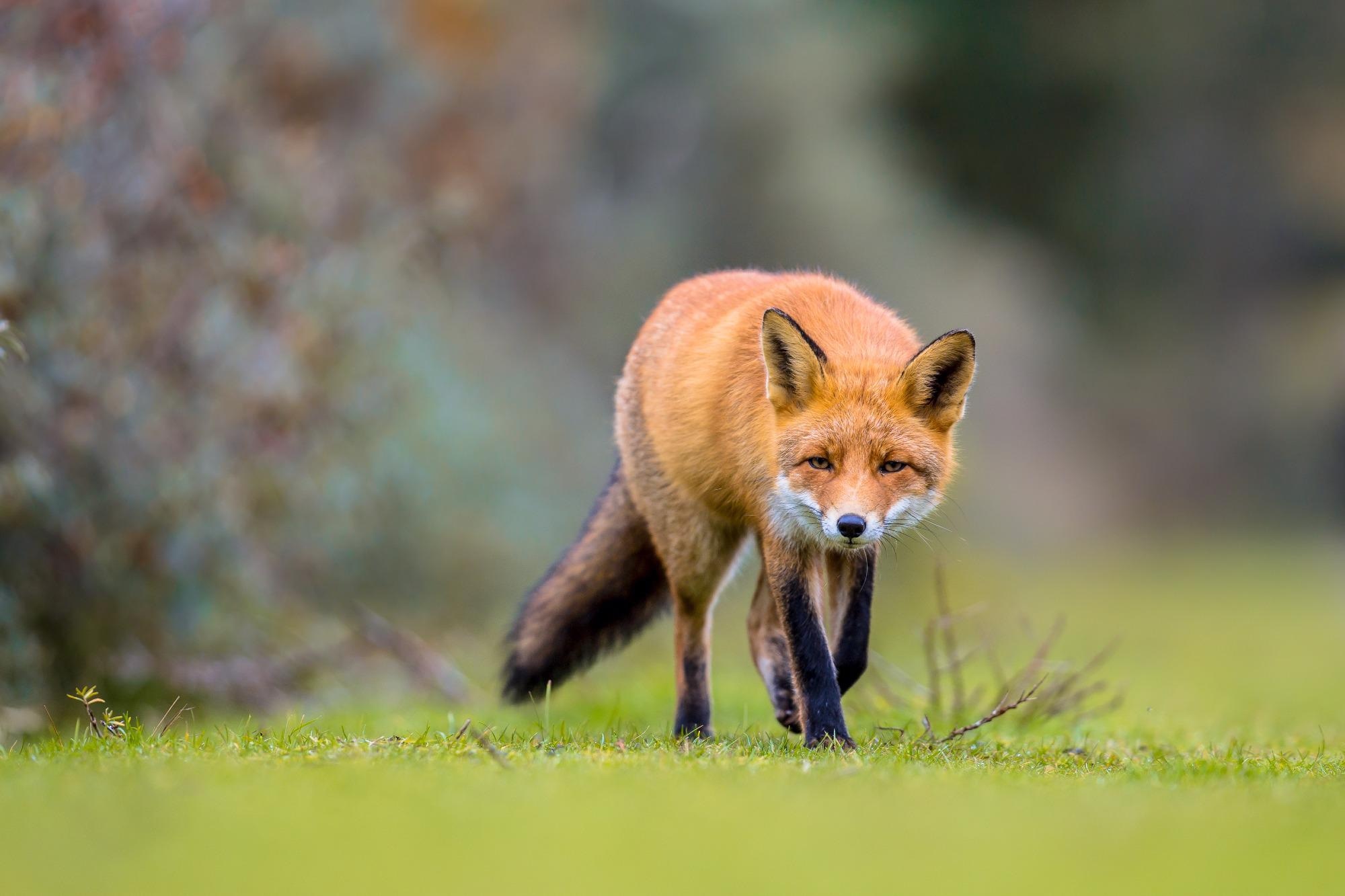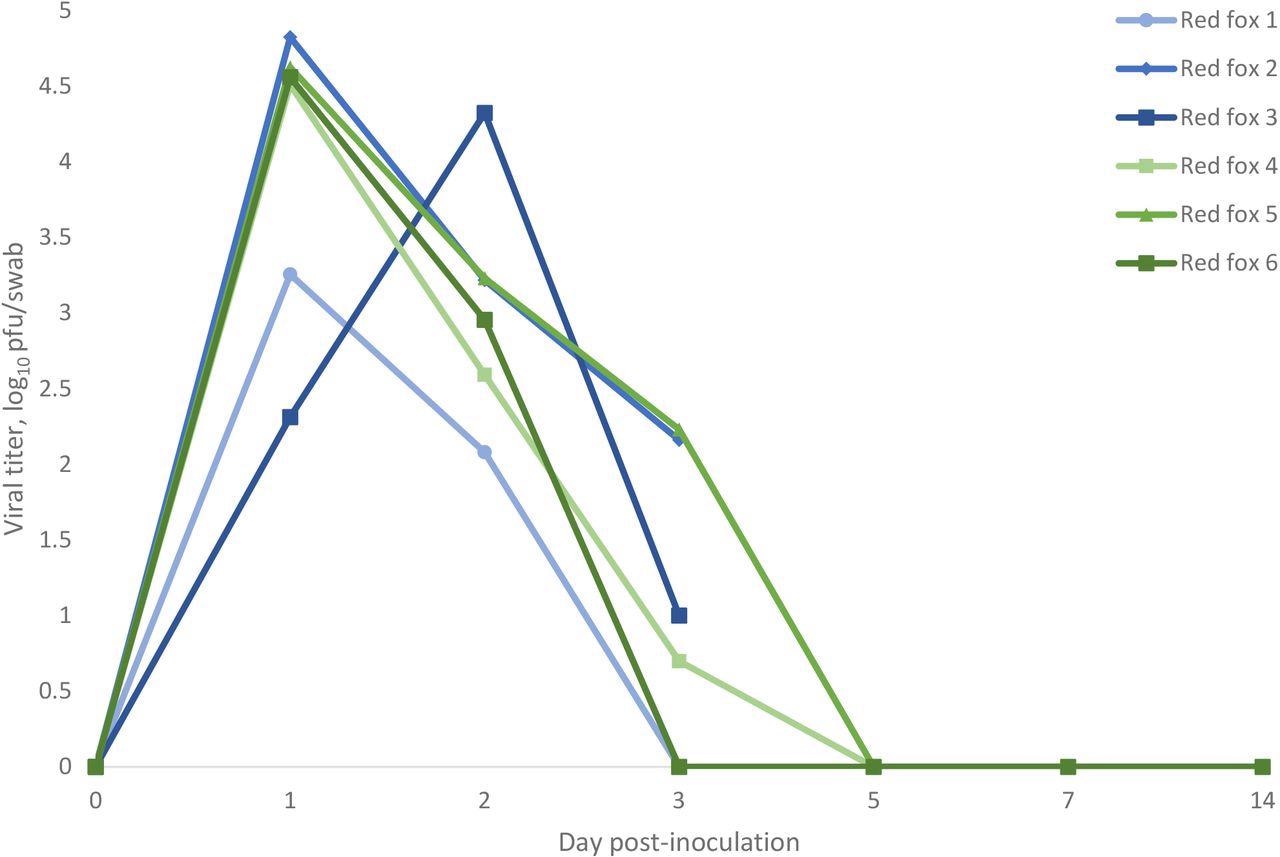Red foxes susceptible to SARS-CoV-2 infection
The world continues to confront the coronavirus disease 19 (COVID-19) pandemic with the unfolding of a third wave of severe acute respiratory syndrome coronavirus 2 (SARS-CoV-2) infection. Given that SARS-CoV-2 likely originated by way of zoonosis, a better understanding of the potential contribution of animals to the epidemiology of SARS-CoV-2 can help inform the public health authorities for continued surveillance and control efforts.
Working towards the aim to determine the SARS-CoV-2 susceptibility of common wildlife species, the researchers in the United States have found that red fox (Vulpes vulpes) can experimentally become infected with SARS-CoV-2 and can shed virus in its oral and nasal secretions.
On the other hand, the team also found that experimental inoculation in coyotes (Canis latrans) does not lead to any infection or viral shedding.
A pre-print version of the research paper is available on the bioRxiv* server while the article undergoes peer review.
 Study: Susceptibility of wild canids to severe acute respiratory syndrome coronavirus 2 (SARS-CoV-2). Image Credit: Rudmer Zwerver / Shutterstock
Study: Susceptibility of wild canids to severe acute respiratory syndrome coronavirus 2 (SARS-CoV-2). Image Credit: Rudmer Zwerver / Shutterstock
Background
So far, both natural and experimental SARS-CoV-2 infections have contributed to our knowledge of the wide range of mammalian species that can become infected. Amongst the order Carnivora, domestic dogs and cats, ferrets, raccoon dogs, and striped skunks are susceptible to the infection. The epidemiologic timeline and sequence homology suggested that human-to-animal transmission was responsible for all these instances.
The majority of the animal species seem to experience a subclinical or mild disease course following infection with SARS-CoV-2. However, some of the infected mink, large felids, pet dogs, and cats have been presented with the clinical signs of coughing, sneezing, ocular/nasal discharge, and increased respiratory effort. In an instance of more severe disease, myocarditis has also been linked to SARS-CoV-2 infection in pet dogs and cats in a report from the United Kingdom.
Multiple reports on SARS-CoV-2 infections in carnivores suggest that other members of the canid family may be vulnerable to infection. To explore this possibility, the team from USDA- National Wildlife Research Center, and Department of Biomedical Sciences- Colorado State University undertook the current study on two wild canids, red fox and coyotes, based on the fact that these are widely distributed in rural and urban environments, are often found in close proximity to humans and may hunt upon species already demonstrated to be susceptible to SARS-CoV-2, including rodents, felids, skunks, and white-tailed deer.
What did the researchers do?
The study was conducted on six red foxes and four coyotes, individually housed in an animal biosafety level-3 (ABSL-3) facility. Animals were challenged with the virus via the intranasal route, and oropharyngeal swab samples were collected on days 1, 2, 3, 5, 7, and 14 days post-inoculation (dpi). Nasal flushes were collected on days 1, 2, 3, 5, and 7 dpi. Animals were kept until 28 (red fox) or 30 (coyote) dpi to follow-up for serology and later euthanized, with tissues collected for histopathology.
Viral isolation was performed on all oral swab and nasal flushes; and plaque reduction neutralization assays were performed on all serum samples. The presence of SARS-CoV-2 RNA in plaques and other direct samples was confirmed with qRT-PCR.
What did the researchers find?
All red foxes displayed mild self-resolving disease, with clinical symptoms of lethargy and sneezing. Infectious viral shedding started at 1 dpi in both oral and nasal secretions, which resolved by 5 dpi. Neutralizing antibody responses that developed on 7 dpi, peaked at 14 dpi, and persisted for the entire study duration were similar to that seen earlier in experimentally infected domestic dogs. However, no gross and histopathological lesions including myocarditis attributable to SARS-CoV-2 were observed in red fox tissues.

Oropharyngeal shedding of SARS-CoV-2 by red fox as detected by plaque assay. Values are expressed as log10 pfu/swab. Red fox 1, 2, and 3 were euthanized at 3 dpi.
“Our results add red fox to the animal species known to be susceptible to SARS-CoV-2 and suggest that they may contribute to continued maintenance and transmission of the virus”, the team highlights.
Coyotes were not susceptible to SARS-CoV-2 infection, as none of the animals displayed clinical symptoms, or shed virus, or seroconverted following the virus challenge. All the oral swabs from 2 dpi tested positive for viral RNA but were not associated with the isolation of infectious virus. This likely represented a scenario of either presence of residual inoculum or infection below the limit of detection. The team, therefore, deduced that coyote is unlikely to be a competent host for SARS-CoV-2.
“Caution should be taken when interacting with susceptible wildlife species in order to prevent transmission events,” concludes the team.
*Important Notice
bioRxiv publishes preliminary scientific reports that are not peer-reviewed and, therefore, should not be regarded as conclusive, guide clinical practice/health-related behavior, or treated as established information.
- Porter, S., M., et al. (2022) Susceptibility of wild canids to severe acute respiratory syndrome coronavirus 2 (SARS-CoV-2). bioRxiv. doi: https://doi.org/10.1101/2022.01.27.478082, https://www.biorxiv.org/content/10.1101/2022.01.27.478082v1
Posted in: Medical Science News | Medical Research News | Disease/Infection News
Tags: Antibody, Assay, Coronavirus, Coronavirus Disease COVID-19, Coughing, covid-19, Epidemiology, Histopathology, Lethargy, Myocarditis, Pandemic, Public Health, Research, Respiratory, RNA, SARS, SARS-CoV-2, Serology, Severe Acute Respiratory, Severe Acute Respiratory Syndrome, Sneezing, Syndrome, Virus, Zoonosis

Written by
Namita Mitra
After earning a bachelor’s degree in Veterinary Sciences and Animal Health (BVSc) in 2013, Namita went on to pursue a Master of Veterinary Microbiology from GADVASU, India. Her Master’s research on the molecular and histopathological diagnosis of avian oncogenic viruses in poultry brought her two national awards. In 2013, she was conferred a doctoral degree in Animal Biotechnology that concluded with her research findings on expression profiling of apoptosis-associated genes in canine mammary tumors. Right after her graduation, Namita worked as Assistant Professor of Animal Biotechnology and taught the courses of Animal Cell Culture, Animal Genetic Engineering, and Molecular Immunology.
Source: Read Full Article
